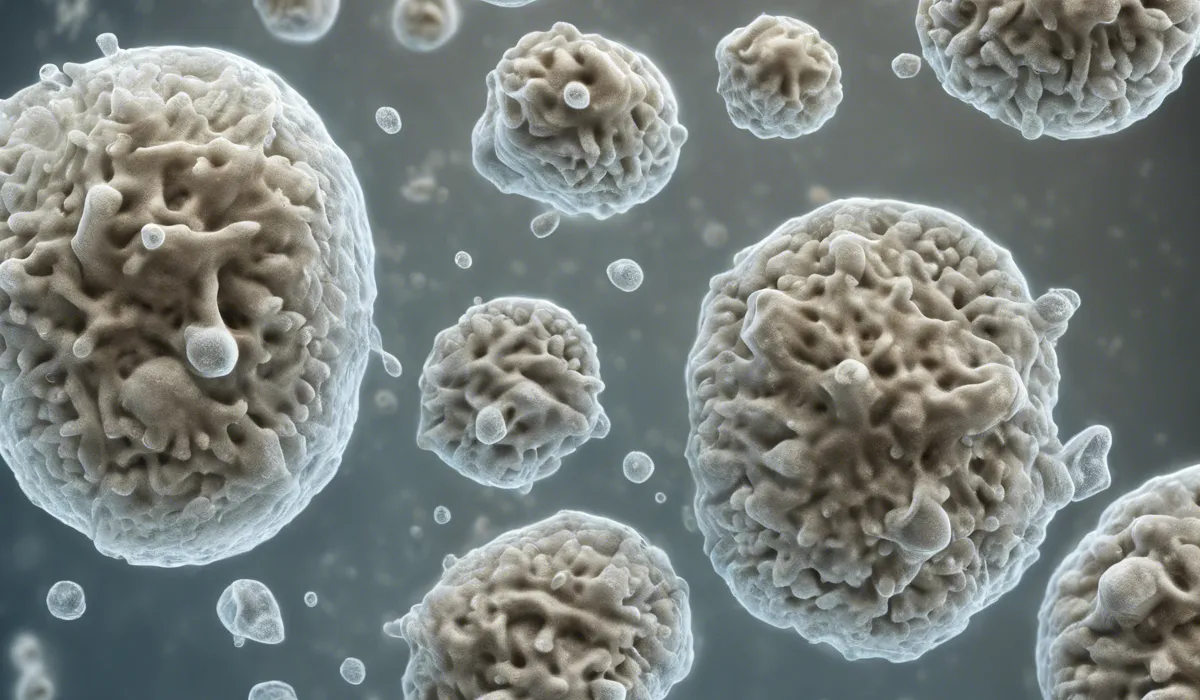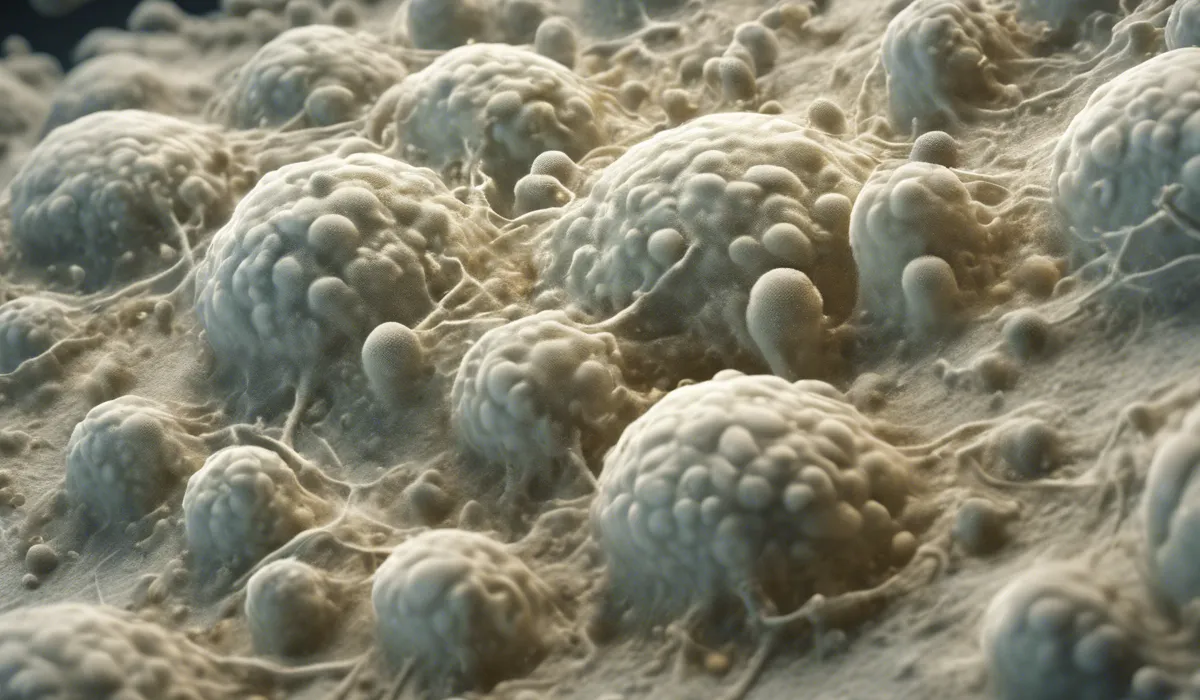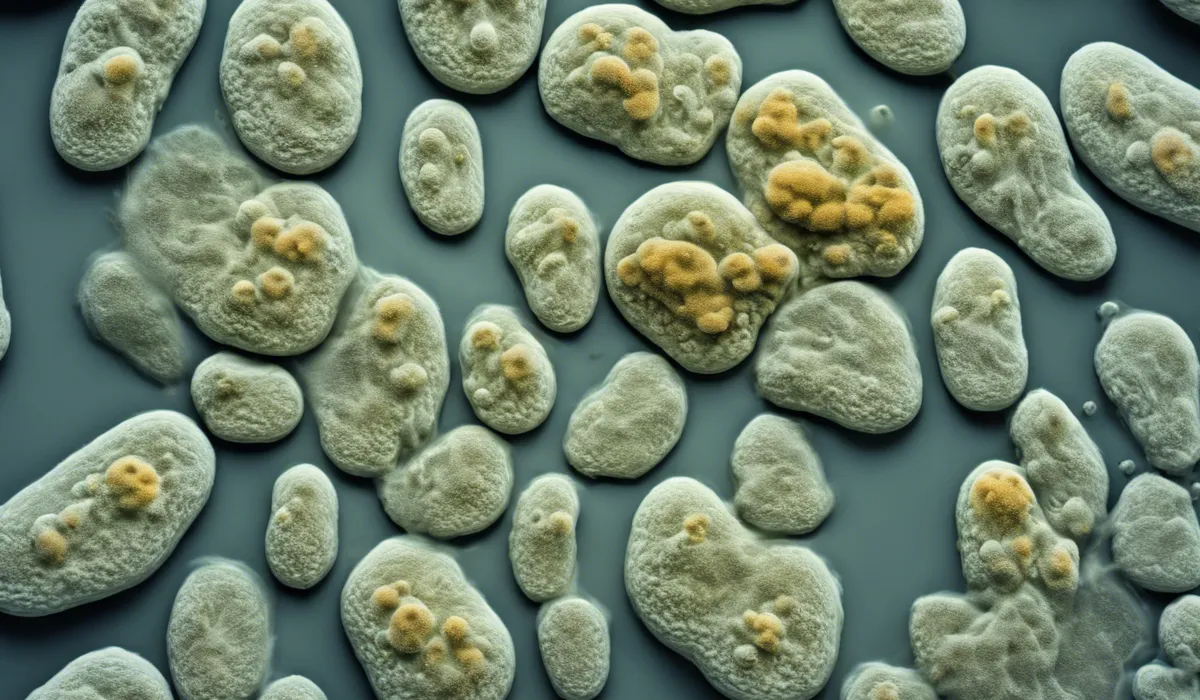Mold is not a prokaryote; it is a eukaryotic organism. Molds are fungi, which have complex cells with nuclei, distinguishing them from prokaryotes like bacteria that lack a nucleus.
Mold Characteristics and Classification

Definition of Mold
Mold is a type of fungus that grows in the form of multicellular filaments called hyphae. These tiny organisms play a crucial role in the ecosystem by breaking down dead organic material, making nutrients available to other organisms.
Molds are found almost everywhere, thriving both indoors and outdoors, particularly in damp environments.
Basic Characteristics of Molds
Molds, being fungi, share some common traits such as their ability to reproduce through spores and their preference for moist conditions.
They can be various colors, including green, black, or white, and can appear as a velvety or fuzzy growth on surfaces. Unlike plants, molds do not require sunlight for photosynthesis and get their energy from organic matter.
Fungi Kingdom Overview
The Fungi kingdom encompasses a diverse range of organisms including molds, yeasts, and mushrooms.
These organisms are eukaryotic, meaning their cells have a true nucleus enclosed within membranes. Fungi play a significant role in nutrient cycling and are essential for the health of many ecosystems.
Distinctions between Prokaryotes and Eukaryotes
Living organisms are classified as prokaryotes or eukaryotes based on their cellular structures.
Prokaryotes, such as bacteria and archaea, have simpler cells that lack a nucleus and membrane-bound organelles. Eukaryotes, which include plants, animals, and fungi, possess complex cells with a nucleus and various organelles, allowing them to engage in more advanced biological processes.
The Nature of Prokaryotes

Definition and Features of Prokaryotes
Prokaryotes are single-celled organisms that lack a defined nucleus. Their DNA floats freely within the cell, and they replicate through a process called binary fission.
Prokaryotes are known for their rapid growth and adaptability to a wide range of environments.
Examples of Prokaryotic Organisms
Well-known prokaryotes include bacteria like Escherichia coli, which is found in the intestines of humans and animals, and Cyanobacteria, which are photosynthetic and contribute to the oxygen in our atmosphere.
Archaea, often found in extreme environments like hot springs, are another example of prokaryotic life.
Key Differences between Prokaryotic and Eukaryotic Cells
The primary differences between prokaryotic and eukaryotic cells lie in their complexity. Eukaryotic cells have a nucleus and organelles such as mitochondria and chloroplasts, which are absent in prokaryotes.
The cell walls of prokaryotes are also different in composition, often containing peptidoglycan, which is not found in the cell walls of fungi.
Establishing Mold’s Identity

Mold as a Part of the Fungi Kingdom
Mold is classified within the Fungi kingdom due to its eukaryotic cell structure, its way of obtaining nutrients, and its life cycle.
As a member of this kingdom, mold shares many characteristics with other fungi, such as the production of spores and the absence of photosynthesis.
Cellular Structure of Mold
The cellular structure of mold clearly indicates it is a eukaryotic organism. Mold cells have a well-defined nucleus containing their DNA, as well as other membrane-bound organelles that carry out specific functions within the cell.
Why Mold is Not Considered a Prokaryote?
Mold is not considered a prokaryote because it has a complex cellular structure characteristic of eukaryotes.
Unlike prokaryotes, mold cells have a nucleus, multiple chromosomes, and a cytoskeleton, which contribute to their ability to form multicellular structures like hyphae and mycelium.
Implications of Mold Being a Eukaryote
As a eukaryote, mold has the capacity for more complex growth and reproduction than prokaryotes. It can form intricate networks and interact with other organisms in symbiotic relationships.
Furthermore, the fact that mold is a eukaryote has implications for how we approach mold-related issues in environments such as homes and agricultural settings.
FAQs About Mold Classification
Is mold considered a prokaryote?
No, mold is not considered a prokaryote; it is a eukaryotic organism.
Are molds made up of complex cells?
Yes, molds are made up of complex cells with structures such as nuclei.
What kingdom do molds belong to?
Molds belong to the Fungi kingdom.
Do mold cells have a nucleus?
Yes, mold cells have a nucleus, which distinguishes them from prokaryotic cells.
How do molds differ from bacteria?
Molds differ from bacteria in that they are eukaryotic, with complex cells that have a nucleus, while bacteria are prokaryotic and lack a nucleus.
Final Thoughts
Mold represents a group of eukaryotic organisms within the kingdom Fungi, characterized by complex cellular structures with nuclei.
This fundamental trait sets molds apart from prokaryotes, like bacteria, which do not possess a nucleus. Therefore, molds cannot be classified as prokaryotes.
